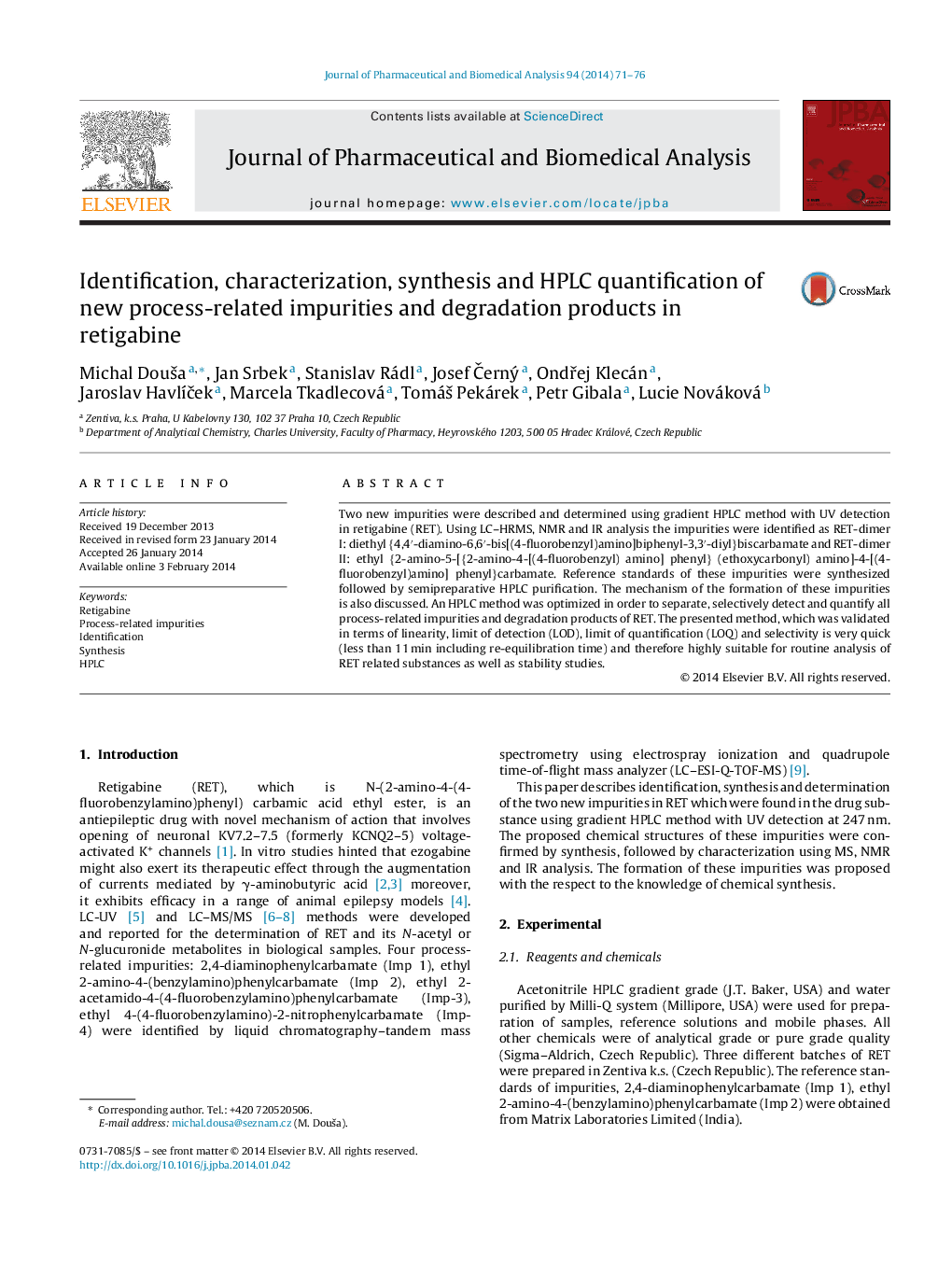| Article ID | Journal | Published Year | Pages | File Type |
|---|---|---|---|---|
| 1220434 | Journal of Pharmaceutical and Biomedical Analysis | 2014 | 6 Pages |
•Two new impurities were determined using HPLC method with UV detection in retigabine.•The impurities were identified as dimeric impurities of retigabine using LC–MS, NMR and IR study.•Reference standards of impurities were prepared via organic synthesis and HPLC purification.
Two new impurities were described and determined using gradient HPLC method with UV detection in retigabine (RET). Using LC–HRMS, NMR and IR analysis the impurities were identified as RET-dimer I: diethyl {4,4′-diamino-6,6′-bis[(4-fluorobenzyl)amino]biphenyl-3,3′-diyl}biscarbamate and RET-dimer II: ethyl {2-amino-5-[{2-amino-4-[(4-fluorobenzyl) amino] phenyl} (ethoxycarbonyl) amino]-4-[(4-fluorobenzyl)amino] phenyl}carbamate. Reference standards of these impurities were synthesized followed by semipreparative HPLC purification. The mechanism of the formation of these impurities is also discussed. An HPLC method was optimized in order to separate, selectively detect and quantify all process-related impurities and degradation products of RET. The presented method, which was validated in terms of linearity, limit of detection (LOD), limit of quantification (LOQ) and selectivity is very quick (less than 11 min including re-equilibration time) and therefore highly suitable for routine analysis of RET related substances as well as stability studies.
Graphical abstractFigure optionsDownload full-size imageDownload as PowerPoint slide
